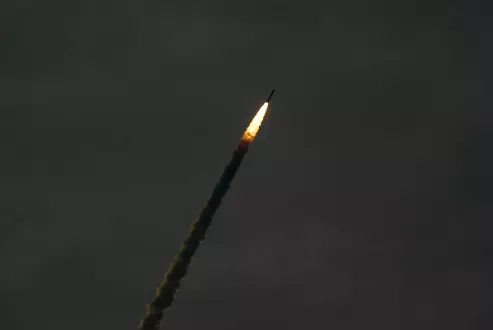
New Delhi, June 30 -- India is accelerating the development of an advanced bunker-buster missile system following the recent US strike on Iran's Fordow nuclear site using GBU-57/A Massive Ordnance Penetrators. The move highlights a significant leap in India's efforts to modernise its strategic deterrent with indigenous, high-impact weaponry designed to neutralise fortified underground targets.
According to defence officials, the Defence Research and Development Organisation (DRDO) is modifying the Agni-5 intercontinental ballistic missile to carry a massive conventional warhead. "This variant will not be nuclear-armed. It is being reconfigured to deliver a warhead weighing up to 7,500 kilograms capable of penetrating 80 to 100 metres underground," a senior official involved in the programme said.
Unlike the original Agni-5, which has a range of over 5,000 kilometres, the upcoming version will be optimised for medium-range precision targeting, with an expected range of around 2,500 kilometres. The development is part of a broader strategic shift focusing on flexibility and rapid response.
Sources familiar with the project confirmed that two variants are under construction. "One will be designed for high-altitude airburst detonation, effective against surface command nodes. The other is built for deep-penetration strikes against hardened underground sites," a senior DRDO scientist stated.
The US recently deployed 14 GBU-57 bunker-buster bombs against Iran's nuclear assets, a move watched closely in strategic circles. India's design, however, departs from the American model by eliminating the need for manned bombers. "The missile-based approach increases reach and survivability while reducing operational costs," a military analyst noted.
With expected speeds ranging from Mach 8 to Mach 20, the new missile is set to enter the hypersonic category, potentially surpassing US systems in payload. Defence planners see this capability as vital in countering threats from adversaries like China and Pakistan, particularly for targeting missile silos and buried command structures.
While no official timeline has been announced, officials suggested that developmental trials may begin within the next 18 months.
Published by HT Digital Content Services with permission from Millennium Post.
